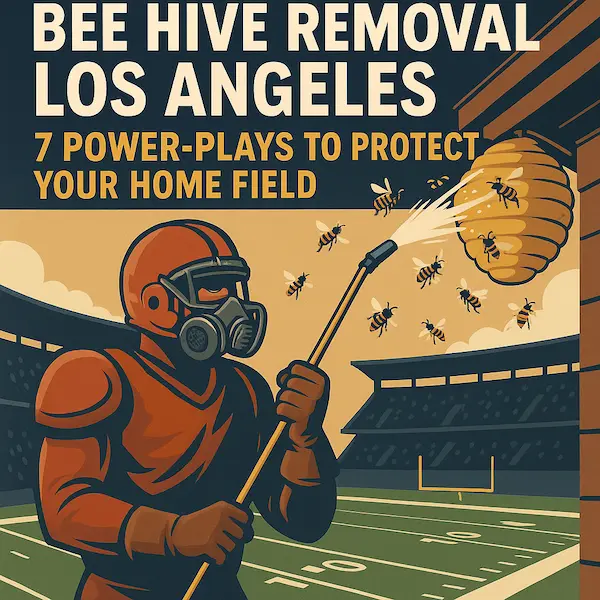
Bee Hive Removal Los Angeles: 7 Power-Plays to Protect Your Home Field
Imagine your home as a stadium. Bright lights, cheering fans, the home field advantage, but suddenly a rival team shows up: a buzzing hive of honey bees setting up shop in your attic or wall void, plotting to take over your turf. When you’re a homeowner in Los Angeles, you’re not just playing for yard appearances, you’re defending your property value, your family’s safety, and your peace of mind. That’s where TouchDown Pest Control steps in, wearing the jersey of defensive champs and blocking every swarming play the pests try to run.
In Los Angeles and surrounding cities from the foothills of Pasadena and Glendale to the hustle of Downtown LA and the suburbs of Long Beach, the climate is nearly ideal for honey bees to find cracks, crevices and cavities to call home. Warm winters, flowering landscapes year-round, and older homes with eaves and attics make it a perfect field for colonies to march in. If you ignore the threat, the hive can expand, honey can seep into walls, structural damage can mount, and future invasions become a replay your property doesn’t want to see. UC IPM+2NC State Extension+2
This article is your playbook. We’ll cover how to secure your home’s perimeter defense, interior control, prevention habits (special teams), why one-time treatments often fail, the local knowledge advantage we bring, and how our advanced Integrated Pest Management strategy acts like a full-season defensive program. By the end, you’ll see why TouchDown Pest Control isn’t just removing hives — we’re coaching your home to win the championship of being bee-free.
Visit our homepage at https://touchdownpestcontrol.com to learn more about our team, the plays we run, and how we step onto your turf ready to defend
Section 1 — Perimeter Defense
Before the bees ever take the snap and cross into your home, your first line of defence is securing the perimeter of your property. In football terms, this is your defensive line getting set at the line of scrimmage — sealing every possible gap, reducing the opponent’s options, and controlling the field.
In the Los Angeles region, seasonal pest pressure is real: spring swarms in April/May, followed by summer heat that drives bees to look for attic cool-spots, wall voids and structures. The guide from UC ANR emphasises that once a hive is established, the honey and wax left behind attract still more bees if entry points are not sealed. UC IPM
Actionable steps you can take as the homeowner:
Inspect for openings: eaves, roof vents, attic access, chimney gaps, siding cracks, gaps around plumbing or wiring.
Use durable materials: caulk pencil-sized gaps or larger, cover vents with ¼-inch mesh, fill voids with closed-cell foam then trim flush.
Trim landscaping: keep tree branches and shrubs away from roof eaves so bees don’t use them as ladders.
Monitor frequently: make perimeter checks once per season (spring & summer) so you can spot new swarm activity before it becomes aggressive.
But here’s a winning play: ongoing service is preferable to a one-time seal-up. At TouchDown Pest Control, we treat the perimeter as part of the season plan — we evaluate, seal, monitor, and provide quarterly check-ups so the defence remains tight. A one-off treatment is like playing only the first quarter of the game and then walking off the field — the opponent still has time to rally.
Check out our services page: https://touchdownpestcontrol.com/services/ to see how we maintain your perimeter defence year-round.
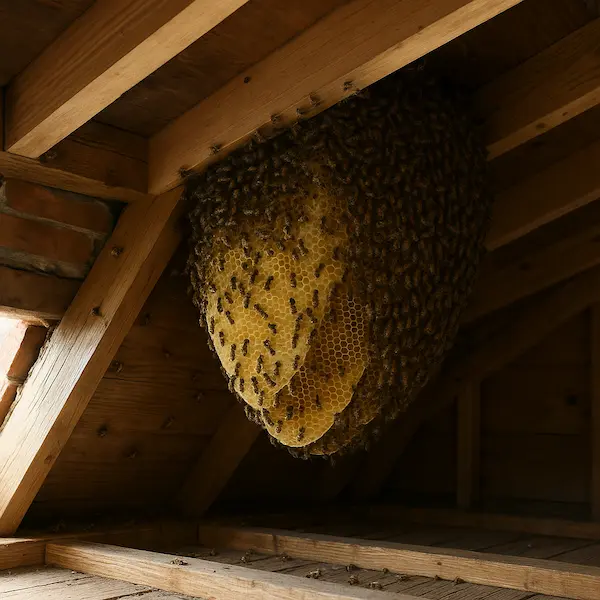
Section 2 — Interior Control
Once the bees breach your line and enter the home field, the interior becomes the end zone they’re trying to claim. Interior control is your linebackers — tracking down threat zones, neutralising them, and protecting your family’s space.
Bees can nest in very hidden spots: attic voids, behind siding, inside wall cavities, chimney flues. As the NC State FAQ explains, if honeycomb and wax remain inside walls after a colony is removed (or kills itself off), the honey can ferment, seep through drywall, cause stains, attract ants, rodents, mold — in short, a second quarter of damage kicks in. NC State Extension+1
Practical steps homeowners can take:
Listen: you may hear a faint but steady “hum” in attic or eaves — that’s a hive at work.
Inspect: look for bees flying in/out of a gap at dusk, check attic insulation for yellowish stains.
Don’t attempt DIY removal: disturbing a hive without protective gear and expertise can trigger aggressive defensive behaviour. As Terminix warns: “DIY bee removal is dangerous … call a professional.” Terminix
Professional advantage: At TouchDown Pest Control, our team brings specialist equipment, safety protocols and professional training. We track the hive, remove the honeycomb and wax, sanitize the cavity, repair the structural opening, and monitor for any re-establishment. Then we link it into our season plan so that we’re not just playing one defensive down — we’re covering every quarter. Reach out via our contact page: https://touchdownpestcontrol.com/contact/ to schedule your interior inspection and control.
Section 3 — Prevention Habits
If perimeter defence is your defensive line, and interior control is your linebackers, prevention habits are your special teams — those critical support plays that win hidden field position across the game.
In Los Angeles homes, a few simple routines can significantly reduce the risk of a hive looking at your property as its home field:
Lighting: Bees are drawn to certain lights, especially yellow or near attic vents. Installing LED fixtures under eaves and shielding vents reduces attraction.
Clutter & storage: Attics filled with stored items, old furniture, cardboard boxes create hidden spaces bees love. Keep attic areas clear and ventilated.
Landscaping: While flowers and shrubs are great for pollinators, placing beds directly under eaves or too close to the house invites bee scouts. Move flower beds a few feet from the structure or plant them at ground level away from eaves.
Moisture & water: Bees need water. Leaking sprinklers or pooling water near foundation attract them. Fix irrigation drips and ensure proper drainage.
Without consistent habits, your special teams will fumble field position. Even if you’ve had an interior treatment or perimeter seal, if you don’t monitor lighting, clutter and landscaping, you leave gaps for invasion. At TouchDown, we include prevention-habits coaching as part of our service plan — we hand you the playbook, inspect your special teams twice a year, and keep your defence-unit sharp throughout the season.

Section 4 — Local Knowledge Advantage
In football, the team with the best home-field intel has the edge: they know the turf, the wind, the tendencies. When it comes to hive invasions in the Los Angeles region — this territory counts. That’s why TouchDown Pest Control’s local knowledge advantage matters.
We serve neighborhoods across Los Angeles and surrounding cities: Pasadena, Glendale, Burbank, Long Beach, Downtown LA, the San Fernando Valley, South Bay and more. Each zone has unique risk factors:
Pasadena and Glendale foothills: Older homes with steep roofs, large eaves, and decorative attics — prime entry zones for bees climbing up tree limbs.
Burbank and San Fernando Valley: Dense vegetation, lots of garden landscaping, high humidity afternoons — bees thrive in those conditions.
Long Beach and South Bay: Coastal homes with salt-air deterioration of screens and vents, often creating unnoticed gaps into attics.
Downtown LA / West LA: Mixed-use homes, urban trees, and aging chimneys or multi-unit structures where bees can nest between units.
Because we’ve patrolled this field for years, we recognise patterns: for example, the April-May swarm period triggered by flowering trees in those zones, or attic heat spikes in summer that drive bees indoors. We adjust our play-calls accordingly — more inspections in early spring in Pasadena, more vent-screen checks in Long Beach after summer.
When you partner with TouchDown Pest Control, you’re tapping a squad that’s already familiar with your turf. We’re not dropping in cold — we’ve studied your field, we know the opponents, and we bring the game-plan ready to execute.
Section 5 — Why One-Time Treatments Fail
You call for a hive removal, the technician arrives, cuts the hive out, hours later your attic seems quiet. But three months later, you spot bees again. What happened? Because one-time treatments are like stopping the game after one play — they don’t cover the full four quarters.
Here’s why they fail:
Residual honeycomb or wax left behind continues to attract new scouts. The UC ANR guide highlights that wax/honey left behind can ferment and drip through walls, creating smells and structural stains — inviting ants, rodents, other pests. UC IPM+1
Entry points may have been sealed once, but structural shifts, weather, roof repairs, or new ventilation can reopen gaps. Without ongoing monitoring, the defence line weakens.
Bees establish new hives not just in one spot, but often redirect to nearby walls, tree cavities or sheds if they sense weakness — they treat your property like a series of zones, not just the one you cleared.
Rarely do one-time treatments include long-term follow-up, seasonal inspections or habit coaching. They fix the moment; they don’t secure the season.
At TouchDown Pest Control, ongoing service is like keeping your entire defensive roster on the field. We inspect each quarter, seal vulnerabilities, adjust tactics if tumors pop up, and keep the opponent (the hive) from mounting a comeback. Visit our services page: https://touchdownpestcontrol.com/services/ and ask about the ongoing maintenance plan — the season pass for your home field defence.

Section 6 — Advanced IPM Strategy
In football, the smartest teams don’t rely solely on brute force — they study the opponent, tweak formations, adjust at halftime, and repeat that process week after week. In pest control, the equivalent is an Integrated Pest Management (IPM) strategy — a full-spectrum approach combining inspection, prevention, treatment, monitoring, adaptation. At TouchDown Pest Control, we deploy our IPM playbook to hedge against hive invasions, sustain defence, and adapt to new threats.
Here’s how our IPM works for bee hive removal in Los Angeles:
Inspection & Scouting – We conduct a baseline survey: eaves, roof joints, wall voids, attic, landscaping, venting. We map risk zones (like corner blitzes) and log potential entries.
Elimination & Remediation – If a hive is active, we execute removal or relocation (if feasible), ensure full honeycomb and wax extraction, repair structural damage, and seal entry. According to extension guidance, if honeycomb remains, even after bees are removed, the odor and residue attract new colonies. Pests In The Home+1
Habitat Modification – We coach home-owners on lighting adjustments, landscaping clearance, moisture control, proper attic ventilation, and clutter reduction (our special teams strategy) to reduce suitability for hive establishment.
Monitoring & Maintenance – We schedule quarterly check-ins (spring, summer, fall, winter) to re-inspect gaps, check for signs of bee activity, and maintain preventive measures. We keep logs like a playbook of previous threats.
Adaptation & Response – Based on seasonal shifts or local intelligence (for example, a new construction nearby that displaced bee habitat), we adapt our tactics—maybe more frequent inspections in the early swarm season or targeted landscaping service.
Customer Education & Engagement – We provide the homeowner with clear, actionable summary of what we found, what we fixed, what you should watch for — putting you on the bench with your own role in the game.
By using IPM, we don’t just win one game (remove a hive). We manage the season. We keep your home field clear of repeated invasions. We build resilience. In football terms, we’re not satisfied with one big play — we’re executing a full undefeated season of home-field defence.
Section 7 - Get Into Action
You’ve seen the playbook. You understand how a hive invasion in Los Angeles can sneak in, gain ground, cost you damage, and threaten your home’s value and safety. Now it’s time to choose your team — and the defence that never takes a break.
At TouchDown Pest Control, we’re not just another pest company. We’re your defensive squad. We practice the drills, we maintain year-round coverage, we adjust to your neighborhood, we monitor the threat — and we win. Don’t wait until the hive is already scoring in your attic.
💰 Get $100 OFF your first month of ongoing pest control service when you call TouchDown Pest Control today. That’s your pre-game discount to lock in protection.
Ready to take the field? Here are your options:
Visit our Homepage and learn about our team and credentials.
Explore our Services to see the full menu of defense plans.
Book your defense strategy session now via our Contact page — we’ll show up, scan your turf, identify weak spots, and put your plan into motion.
Your home is the stadium. The bees are the opposing team. You’ve got one chance to defend. Let TouchDown Pest Control coach you to victory — for the whole season and beyond. Call now, secure your home field advantage, and never let a bee hive score on you again.
🧠 People Also Ask (FAQ)
How much does bee hive removal cost in Los Angeles?
Pricing depends on hive size, location, and whether structural access is needed (attic, walls, roof eaves). In Los Angeles, professional removal typically ranges $250–$1,200+, with larger structural removals running higher. We provide free inspections before giving a final quote.
Are bees protected in California?
Yes. Honey bees are protected as a valued pollinator species in California. Live removal and relocation are preferred whenever possible. Chemical extermination is only used when relocation is not safe or feasible.
How long does bee hive removal take?
Most removals take 1–3 hours, but structural removals and honeycomb extraction can take longer. The key factor isn’t speed — it’s ensuring complete comb removal, sanitation, and sealing so bees don’t return.
Will bees come back after hive removal?
They can if the job isn’t done correctly. Bees return when:
Entry points aren’t sealed
Honeycomb/wax is left behind
The area isn’t cleaned & deodorized
No ongoing monitoring is in place
TouchDown Pest Control removes the hive, sanitizes the cavity, and seals the entry to stop re-infestation.
Can I remove a bee hive myself?
Bad idea. DIY hive removal often leads to:
Aggressive bee swarms and stings
Incomplete removal
Honey leakage and structural damage
Bees returning
Homeowners should not attempt hive removal — it’s a safety risk and usually ends up costing more when remediation is needed.
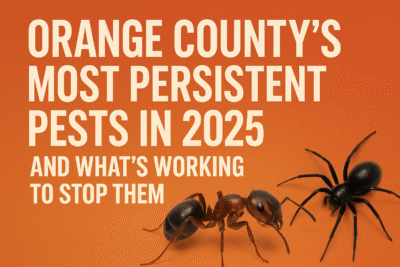
Orange County Pest Control 2025 | Modern Eco-Safe Treatments
Orange County’s Most Persistent Pests in 2025 & How to Stop Them Orange County pest control in 2025 is evolving rapidly as homeowners face tougher,

Long Beach Pest Control: Coastal Home Protection Guide
Long Beach Pest Control Secrets: How Coastal Homes Can Stay Bug-Free All Year Pest Control Services in Long Beach creates the perfect environment for year-round
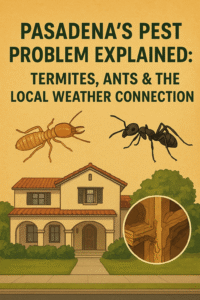
Pest Control in Pasadena CA | Prevent Termites & Ants Year-Round
Pasadena’s Pest Problem: Termites, Ants & the Local Weather Connection Pasadena is famous for its historic homes, tree-lined streets, and warm Southern California climate, but
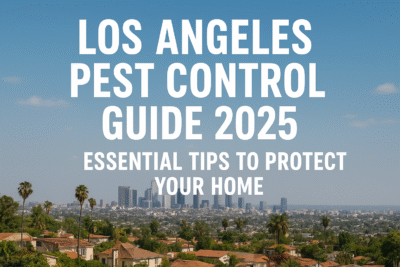
Ultimate Los Angeles Pest Control Guide: Proven Strategies to Eliminate Pests Fast
Los Angeles Pest Control Guide 2025: The Hidden Dangers Lurking in Urban Homes Los Angeles may be known for its sunshine and palm-lined streets, but

Mosquito Season in Los Angeles: 7 Proven Defensive Plays for a Pest-Free Home
Why Mosquito Season in Los Angeles Demands a Full Defensive Playbook When the whistle blows and the summer sun starts heating up, the mosquito squad
